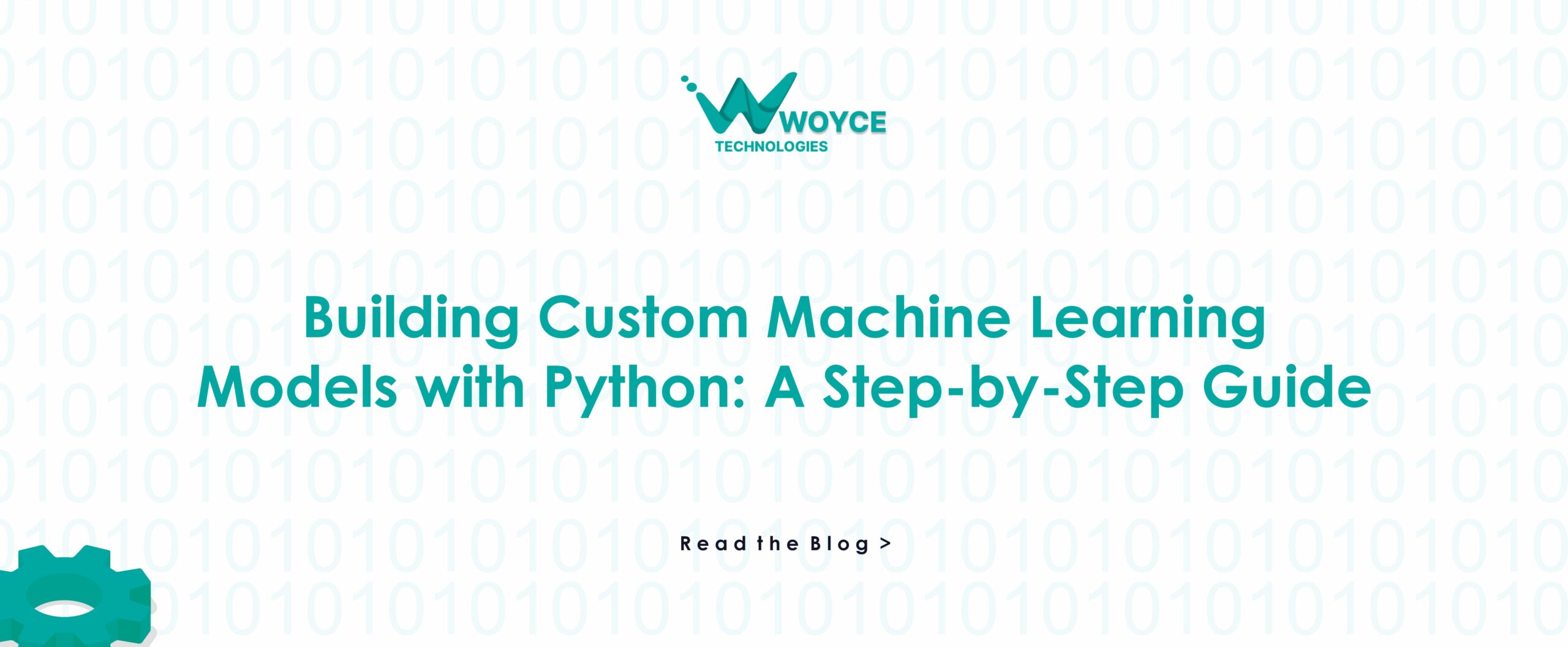Understanding Machine Learning
In today’s digital age, machine learning has become a pivotal technology driving innovation across various industries. Python, with its simplicity and versatility, has emerged as a preferred choice for building custom machine learning models. If you’re eager to embark on this exciting journey of creating your own ML models, you’re in the right place! In this beginner-friendly guide, we’ll walk you through the process step by step, ensuring readability and practical understanding.
Before diving into building custom models, let’s grasp the basics of machine learning. At its core, machine learning involves training algorithms to learn patterns from data and make predictions or decisions. There are three main types of machine learning:
- Supervised Learning: Algorithms learn from labeled data, making predictions or decisions based on that learning.
- Unsupervised Learning: Algorithms uncover hidden patterns or structures in unlabeled data.
- Reinforcement Learning: Agents learn to make decisions by interacting with an environment, aiming to maximize rewards.
Setting Up Your Environment
The first step in building custom ML models with Python is setting up your development environment. You’ll need to install Python and some essential libraries like NumPy, pandas, scikit-learn, and TensorFlow or PyTorch, depending on your preference and the nature of your project.
# Example: Installing required libraries using pip
pip install numpy pandas scikit-learn tensorflowData Collection and Preprocessing
Next, gather the data relevant to your problem domain. Whether it’s structured data from databases or unstructured data from sources like text or images, ensure it’s clean and formatted correctly. Data preprocessing involves tasks like handling missing values, scaling features, and encoding categorical variables.
# Example: Loading and preprocessing data with pandas
import pandas as pd
# Load dataset
data = pd.read_csv('dataset.csv')
# Handle missing values
data.dropna(inplace=True)
# Scale features
from sklearn.preprocessing import StandardScaler
scaler = StandardScaler()
scaled_features = scaler.fit_transform(data)Choosing and Training a Model
With preprocessed data in hand, it’s time to select a suitable machine learning model for your problem. Depending on the task at hand (classification, regression, clustering, etc.), you’ll choose from algorithms like linear regression, decision trees, support vector machines, or neural networks. Train your model using the training data and evaluate its performance using appropriate metrics.
# Example: Training a simple linear regression model
from sklearn.linear_model import LinearRegression
from sklearn.model_selection import train_test_split
from sklearn.metrics import mean_squared_error
# Split data into training and testing sets
X_train, X_test, y_train, y_test = train_test_split(features, target, test_size=0.2, random_state=42)
# Initialize and train the model
model = LinearRegression()
model.fit(X_train, y_train)
# Evaluate model performance
predictions = model.predict(X_test)
mse = mean_squared_error(y_test, predictions)
print("Mean Squared Error:", mse)Model Evaluation and Fine-Tuning
Once your model is trained, it’s crucial to evaluate its performance to ensure it’s making accurate predictions. Fine-tune hyperparameters, experiment with different algorithms, or try feature engineering techniques to improve model performance further. Cross-validation and grid search can help you find the best combination of hyperparameters.
# Example: Fine-tuning model hyperparameters with grid search
from sklearn.model_selection import GridSearchCV
# Define hyperparameters grid
param_grid = {'alpha': [0.01, 0.1, 1.0, 10.0]}
# Initialize grid search
grid_search = GridSearchCV(estimator=model, param_grid=param_grid, cv=5)
grid_search.fit(X_train, y_train)
# Get best hyperparameters
best_params = grid_search.best_params_
print("Best Hyperparameters:", best_params)Deployment and Monitoring
Finally, deploy your model into production where it can make predictions on new, unseen data. Monitor its performance over time and retrain periodically to adapt to changing patterns. Tools like Flask or Django can help you create APIs for serving your model, making it accessible to other applications.
Conclusion
Building custom machine learning models with Python is an empowering journey that opens doors to endless possibilities. By following this step-by-step guide, even beginners can grasp the fundamentals and create models tailored to their unique needs. Remember, practice and experimentation are key to mastering machine learning. So, roll up your sleeves, dive in, and start building your own ML models today!

